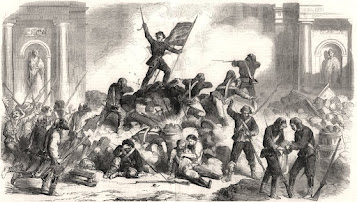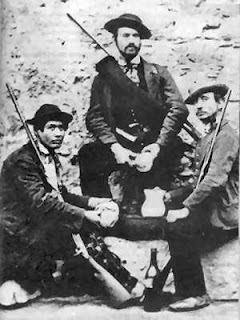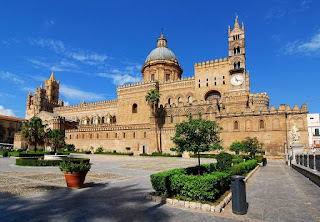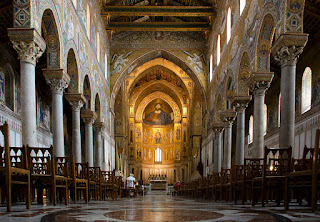Maurizio Cattelan - conceptual artist
Controversial work softened by irreverent humour
The conceptual artist Maurizio Cattelan, known for the dark humour and irreverence of much of his work, was born on this day in 1960 in Padua. Cattelan, probably best known for his controversial waxwork sculptures of Pope John Paul II and Adolf Hitler, has been described at different times as a satirist, a prankster, a subversive and a poet, although it seems to have been his aim to defy any attempt at categorisation. His works are often interpreted as critiques of the art world and of society in general and while death and mortality are recurring themes there is more willingness among modern audiences to see how even tragic circumstances can give rise to comedic absurdities. Although some of his work has provoked outrage, more viewers have been enthralled than angered by what he has presented, and some of his creations have changed hands for millions of dollars. Cattelan has said that his memories of growing up in Padua are of economic hardship, punishments at school and a series of unfulfilling menial jobs. His artistic skills were entirely self-taught. He was designing and making wooden furniture in Forlì, in Emilia-Romagna, when he began his first experiments with sculpture and conceptual art. Read more…
______________________________________
Cigoli – painter and architect
First artist to paint a realistic moon
The artist Cigoli was born Lodovico Cardi on this day in 1559 near San Miniato in Tuscany. He became a close friend of Galileo Galilei, who is said to have regarded him as the greatest painter of his time. They wrote to each other regularly and Galileo practised his drawing while Cigoli enjoyed making astronomical observances. Cigoli painted a fresco in the dome of the Church of Santa Maria Maggiore in Rome depicting the Madonna standing upon a pock-marked lunar orb, exactly as it had been seen by Galileo through his telescope. This is the first example still in existence of Galileo’s discovery about the surface of the moon being portrayed in art. The moon is shown just as Galileo had drawn it in his astronomical treatise, Sidereus Nuncius, which published the results of Galileo’s early observations of the imperfect and mountainous moon. Until Cigoli’s fresco, the moon in pictures of the Virgin had always been represented by artists as spherical and smooth. Lodovico Cardi was born at Villa Castelvecchio di Cigoli, and was therefore commonly known as Cigoli. He trained as an artist in Florence under the Mannerist painter Alessandro Allori. Read more…
_____________________________________
Giacomo Quarenghi - architect
Neoclassicist famous for his work in St Petersburg
The architect Giacomo Quarenghi, best known for his work in Russia, and in St Petersburg in particular, in the late 18th and early 19th centuries, was born on this day in 1744 in Rota d’Imagna, a village in Lombardy about 25km (16 miles) northwest of Bergamo. His extensive work in St Petersburg between 1782 and 1816, which followed an invitation from the Empress Catherine II (Catherine the Great), included the Hermitage Theatre, one of the first buildings in Russia in the Palladian style, the Bourse and the State Bank, St. George’s Hall in the Winter Palace, several bridges on the Neva river, and a number of academic buildings including the Academy of Sciences, on the University Embankment. He was also responsible for the reconstruction of some buildings around Red Square in Moscow in neo-Palladian style. Quarenghi’s simple yet imposing neoclassical buildings, which often featured an elegant central portico with pillars and pediment, are responsible for much of St Petersburg’s stately elegance. As a young man, Quarenghi was allowed to study painting in Bergamo despite his parents’ hopes that he would follow for a career in law or the church. Read more…



.jpg)



.jpg)




.jpg)



.jpg)
.jpg)
.jpg)
.jpg)






